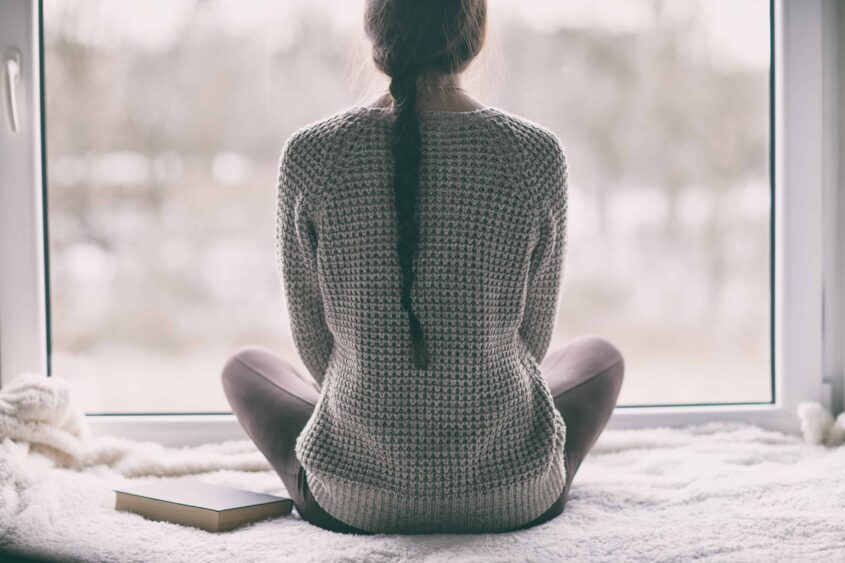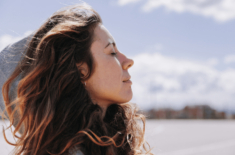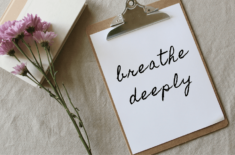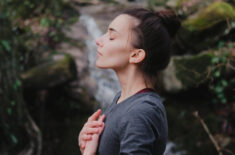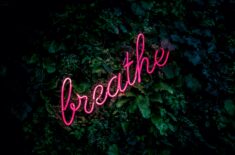Calm is retained by the controlled exhalation or retention of the breath.
– Sutra 1.34, Book 1, The Yoga Sutras of Patanjali, authoritative ancient text on the 8-Limbed Yogic Path
Anxiety is a sneaky, persistent mofo.
Just when you think you have a handle on things, something happens to trigger yet another layer you were unaware of.

Trying to control a mind on overdrive and overpowering emotions is exhausting.
I’m no stranger to this space since I’ve been battling anxiety since childhood.
For the most part (on good days) I’ve got it (somewhat) under control although it’s constant work to manage it.
The truth is that tending to your mental health and well-being is a daily life practice.
If you’re consistent with it your quality of life can improve over time and anxiety will feel much more manageable…
Pranayama Practice: The Ancient Drug-Free Solution
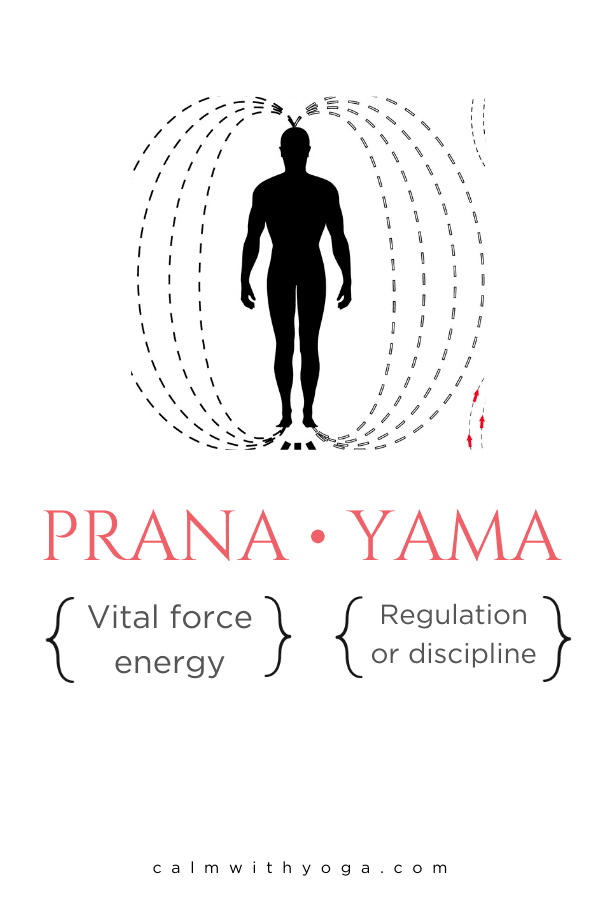
One way to achieve this is to adopt a regular yoga practice.
I’m not just talking about the asanas (yoga postures) although those are for sure helpful…
I’m talking about the practice of pranayama (yoga breathing.)
It’s not always easy to make it to the studio for a class or stick to a home practice, but it may be easier to commit to a regular practice of a few minutes of deep breathing as a form of yoga practice…
Breathing exercises are easy to do on the go as most of the time no one can even tell you’re doing them.
Ancient yogis believed in the calming and grounding power of the breath so much they dedicated an entire limb or section to it called pranayama, which is Sanskrit for ‘life force regulation through breath control.‘
The Hatha Yoga Pradipika, a 500-year-old ancient text on Hatha Yoga (mainly focused on yoga poses) states that:
The Lord of the senses is the mind;
the Lord of the mind is the breath;
the master of the breath is the nervous system;
quietness of the nerves and concentration
depend solely on the steady, smooth, and
rhythmic sound of the inhalation and exhalation.
Pranayama exercises typically consist of three phases:
1- exhaling
2- inhaling
3- breath retention (kumbhaka)
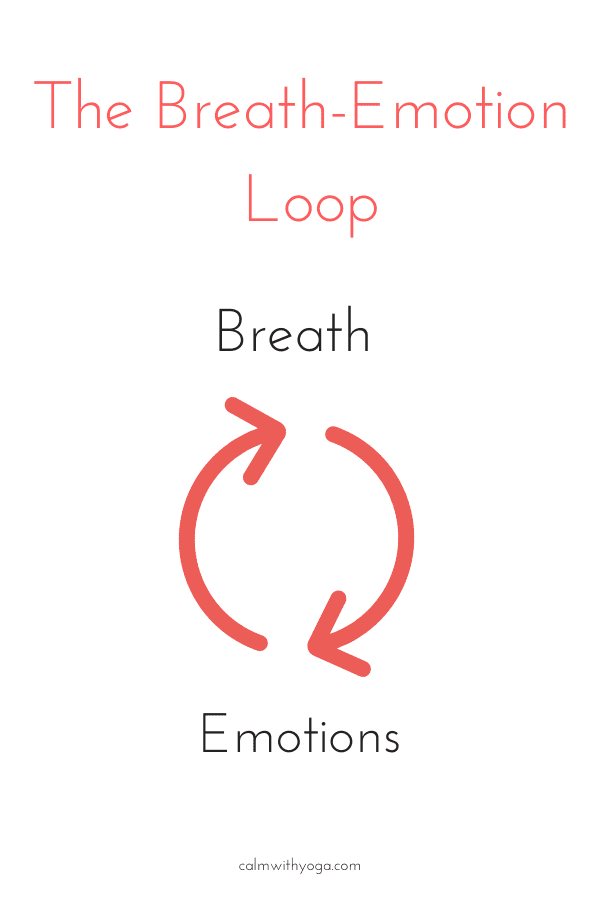
Breath is intimately tied to our emotional and mental state creating the Breath-Emotion Loop:
1- Our emotions and thoughts influence our breathing rhythm.
Next time you’re overtaken by anxiety try and notice your breathing pattern.
It’ll likely be short and fast.
And vice versa if you’re in deep concentration or engaged in a pleasant conversation you’ll likely notice your breath is slower, longer, and maybe even deeper.
2- Our breathing rhythm can influence our mental/emotional state.
If you were to start breathing rapidly taking short and shallow breaths you’ll likely start feeling either awake and alert, or anxious and on guard.
And so, if you begin breathing slowly and deeply you will most probably begin to feel less uneasy and calmer.
This Loop functions very quickly.
In just a few minutes you can begin to regain control of your mental/emotional state by consciously controlling your breath.
This is because deep controlled breathing actually sends signals to your body and brain that activate parts of your calming, relaxing, and soothing nervous system while deactivating your stress response.
Science seems to back this ancient yogic wisdom up, as numerous studies are indicating that a regular, consistent yogic breathwork practice can be efficient and useful in the treatment of anxiety disorders and chronic stress, perhaps even more so than medication alone: (1)
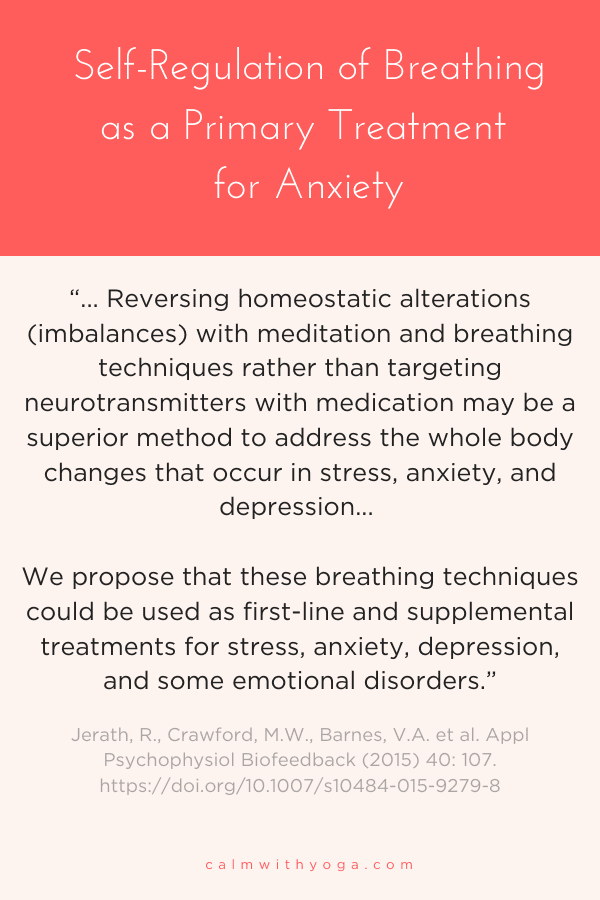
3 Pranayama techniques to help you create more inner calm:
#1 – Nadi Shodhana (alternate nostril breathing):
This technique involves the alternating use of the right and left nostrils as a means of balancing not just your mood but also your two brain hemispheres!
This is the same technique that Hillary Clinton used to help her cope with stress on the campaign trail.
As she told Anderson Cooper in a CNN interview:
“I can only say based on my personal experience if you’re sitting cross-legged on the yoga mat and you’re doing it and you’re really trying to inhale and hold it and then have a long exhale it is very relaxing.”
#2 – Ujjayi (Warrior breath, ocean breath, victorious breath):
Ujjayi is a super simple technique that involves gently constricting the back of your throat so your inhales and exhales sound like ocean waves ebbing and flowing.
This is the same breath used in traditional Ashtanga classes.
#3 – Calming Breath:

Just 5 minutes a day of the following breathing technique can help you increase inner calm, mental focus, and vital energy.
You’ll notice that the exhale is much longer than the inhale.
It’s been shown that longer exhales help to activate your parasympathetic nervous system.
This is the branch of your nervous system that oversees the relaxation and regeneration response (and therefore helps to relieve anxiety!) (2)
HOW TO:
- Sit upright and get comfortable.
- Mouth closed, breathe through your nose only.
- With each inhale, expand your lower belly outwardly as your lungs fill with air. (This also helps to activate the soothing parasympathetic nervous branch.)
- With each exhale, contract your lower belly inwardly towards your spine as your lungs empty of air.
- Inhale for 4 counts.
- Hold for 8 counts.
- Exhale for 12 counts.
- Repeat steps 5-7 for a minimum of 13 rounds. (This is just over 5 minutes.)
Practice this daily, and when you become familiar and comfortable with this practice then go on to add another 5-minute session each day too.
Ideally, you want to aim at a 5-minute session every morning before starting your day and a 5-minute session every evening as you wrap up your day.
Again, pranayama for anxiety isn’t a magic pill – the effects are cumulative, not immediate (most of the time.)
Sure, you can start to feel more relaxed in a few minutes of practice in the moment but keep in mind that to reap the FULL benefits you’ll want to practice this daily.
Make it a habit and incorporate it into your daily like and soon your relationship with anxiety will shift.
REFERENCES
:
(1)https://www.ncbi.nlm.nih.gov/pubmed/25869930
(2)https://www.sciencedirect.com/science/article/pii/S0306987706001666


